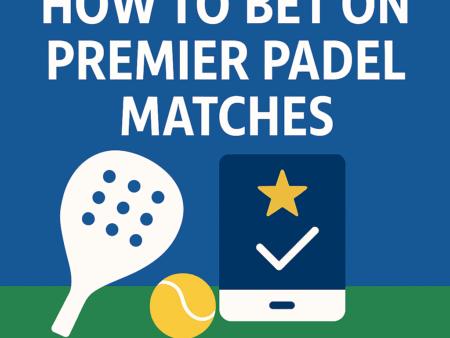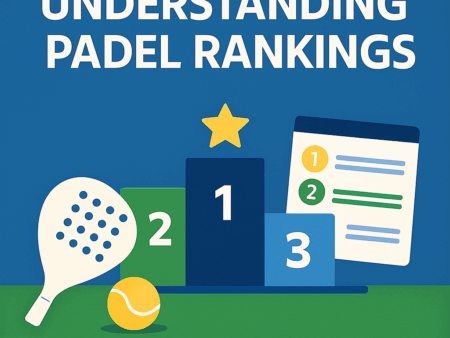
Understanding how padel tournaments are structured is essential for analysing matchups, predicting upsets, and interpreting player form throughout the season. This guide explains everything you need to know about draw formats, seedings, qualifying rounds, match structure, scheduling, and how tournaments progress.
🟦 Tournament Structure Overview
Padel tournaments follow a multi-round elimination format, similar to tennis but with key differences in seeding, qualifiers, and draw size.
Most professional tournaments include:
- Qualifying Rounds
- Main Draw
- Final Rounds (Quarterfinals → Semifinals → Final)
Tournament size varies depending on the category (Majors, P1, P2, FIP events).
🟩 Draw Sizes by Tournament Level
Premier Padel Majors:
- 48-pair main draw
- 16 seeds
- Top seeds may receive first-round byes
Premier Padel P1:
- 48 or 56-pair main draw
- 16 seeds
Premier Padel P2:
- 32–48 pairs
- 8 or 16 seeds
FIP Events (Gold, Star, Rise):
- 16–32 pairs
- Smaller fields
Draw sizes influence:
- Difficulty of route
- Fatigue impact
- Upset potential
🟨 How Seeding Works
Seeds are assigned based on the official FIP/Premier Padel rankings.
Purpose of Seeding:
- Prevents top teams from facing each other early
- Balances the draw
Number of Seeds:
- Majors: 16 seeds
- Standard events: 8–16 seeds
Placement:
- #1 seed placed at top of the draw
- #2 seed placed at bottom
- #3–#4 placed in separate quarters
- Remaining seeds distributed evenly
Seeding ensures the strongest teams don’t meet until late rounds.
🟧 Qualifying Rounds Explained
Before the main draw, tournaments often have a qualifying phase.
Who Plays Qualifying?
- Lower-ranked players
- New partnerships without ranking points
- National entrants (wildcards)
Qualifying Format:
- 16–32 teams
- Typically 1–2 rounds
- Winners advance to the main draw as Qualifiers (Q)
Why It Matters:
Qualifiers can be dangerous due to:
- Momentum
- Match readiness
- Adaptation to court conditions
🟫 Wildcards
Wildcards (WC) are granted by organisers.
Who Gets Wildcards?
- Young national talents
- Local stars
- Big-name veterans returning from injury
- Promising new pairings
Wildcard Upset Potential:
High-risk, high-reward — they may:
- Surprise top teams
- Struggle due to lack of rhythm
🟥 Round Breakdown
Round of 64 (Major Events)
- In 48-pair draws, top seeds may have byes
- Lower seeds begin here
Round of 32
- Full set of matches
- First meaningful round for betting analysis
Round of 16
- Top seeds face rising teams
- Upsets common if conditions unfavourable
Quarterfinals
- Only the elite teams remain
- High tactical quality
Semifinals
- Form meets pressure
- Psychological factors crucial
Final
- Best-of-three sets
- Longest and highest-intensity matches
🟦 Match Format
All professional padel matches use:
- Best-of-three sets
- Golden Point at 40–40
- Tiebreak at 6–6
The Golden Point rule increases:
- Upset potential
- Match volatility
- Pressure moments
🟩 How Draws Affect Betting
Draws massively influence predictions.
✔ Soft Draws
Top seeds avoid major threats → higher likelihood of deep runs.
✔ Hard Draws
Early-round matches against dangerous duos → potential upsets.
✔ Fatigue Routes
Teams playing multiple long matches early often collapse later.
✔ Left/Right Combinations
Some teams struggle against specific styles in their draw section.
🟨 Indoor vs Outdoor Draw Dynamics
Indoors:
- Power attackers thrive
- Quicker matches
- Fewer upsets
Outdoors:
- Long rallies
- Defensive teams gain edge
- Weather increases randomness
Always cross-check draw with conditions.
🟧 Example Tournament Progression
Premier Padel Major (48 Teams)
- 16 teams seeded
- 16 teams enter from Round of 64
- 16 teams receive byes
- 16 qualifiers/wildcards/unseeded teams
Progression:
- R64 → 16 winners
- R32 → seeds join
- R16
- QF
- SF
- Final
Understanding this path is crucial to analysing fatigue.
🟫 Common Upset Patterns
Upsets often occur:
- In early indoor rounds (overconfidence)
- Outdoors on windy days
- Against qualifier teams with rhythm
- When top seeds return from injury
- In newly formed partnerships
🟥 Summary
Padel tournament structure is built around:
- Clear seeding rules
- Draw balance
- Qualifying rounds
- Indoor/outdoor conditions
- Match progression
Understanding these fundamentals is essential for:
- Match analysis
- Tournament predictions
- Betting strategy
Next: Page 6 — Major Padel Surfaces & Their Betting Impact.


